Noadyer Potter worked in the Village of Dowagiac, Cass County, Michigan. He was 46 years old in the 1860 census, born in Ohio. He had four children, all born in Michigan, the oldest in 1843. Jim Kelly, in his book MICHIGAN GUNSMITHS of the 19th & early 20th Centuries, describes a target rifle, with back action lock, muzzle turned for a guide bullet starter, with barrel stamped N. POTTER.
Half stock back action caplock, with adjustable rear sight
(front missing). Barrel marked "N. Potter" with the front end turned for
a starter. German silver mountings on a walnut stock. Toe plate and
butt plate heel are riveted. My step-father pulled both a shotgun and
this rifle out of someone's trash in Marathon, NY when he was a teenager
in 1938 or 39 (he couldn't remember which year, but they moved out of
Marathon after that). The rib is hollow. There is a piece of tin or
something over the wood under the drum. The tumbler won't hold full
cock, and there is no half cock notch. Barrel is straight 1 1/8", about
38 cal.
...
07/31/10 Contributed by James Kelly
Potter, Noadyer, Village of Dowagiac 1860 census 187518, 1863—18958, 1869-187712
Cass County. Maker of percussion sporting rifles. The 1860 census shows Noadyer Potter 46, Gun Smith, and his wife Dorothier (spell?) 41, both from Ohio. Potter’s real estate value was $1400, nothing listed for personal estate. Four children, all born in Michigan, Laura 17, a Milliner, Caroline 15, Franklin 4 and Clark 1. Also in this household George Bowling 28, Carpenter from Ohio and Janette, age illegible, from Michigan. Bowling’s real estate in 1860 valued $500 and his personal estate $300. By 1880 Noadyer had remarried Sarah A., and had a step daughter Clara Townsend, born about 1862 in Michigan. His son Frank, now 25, worked as a blacksmith.
A Potter target rifle in one private collection21 has a heavy .41 cal 34” octagon barrel 1 1/16” across the flats, the muzzle turned round for 7/16” to fit a starter. Back action N ASHMORE lock. Brass triggerguard with finger spur, both tangs fastened to stock with screws. The brass buttplate has an iron rivet joining it to toeplate.
Folding fine thread peep sight on tang, rear barrel sight adjustable for elevation, brass blade front sight. There is an empty dovetail in front of this sight. Two iron thimbles, under-rib. The walnut halfstock has a cheekpiece, brass scroll sideplate, quite similar to the Ransom Armstrong rifle described earlier. Barrel marked N. POTTER
George Boral, a collector of Michigan guns, tells me that the European style moulding in front of the back-action lock, and the distinctive cast pewter forend cap, are a trademark of Potter’s style.
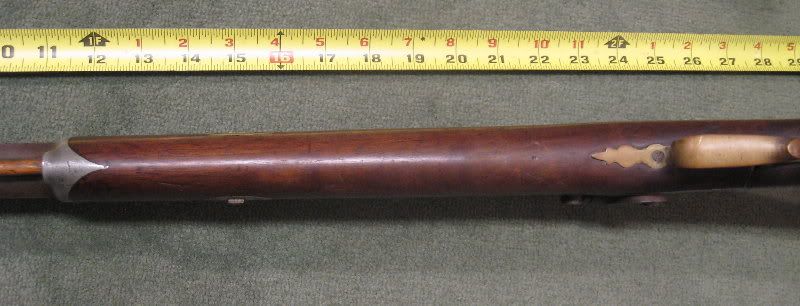
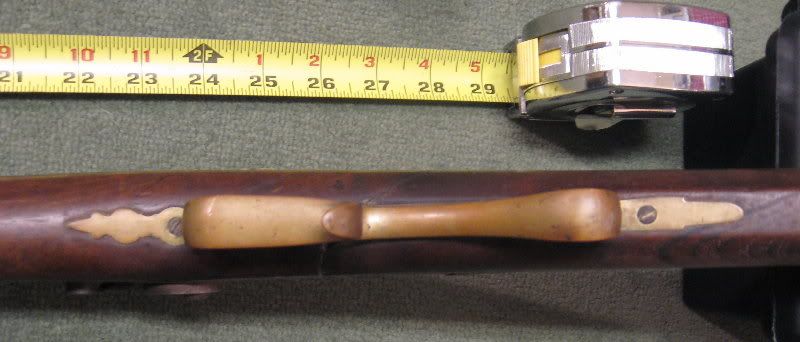

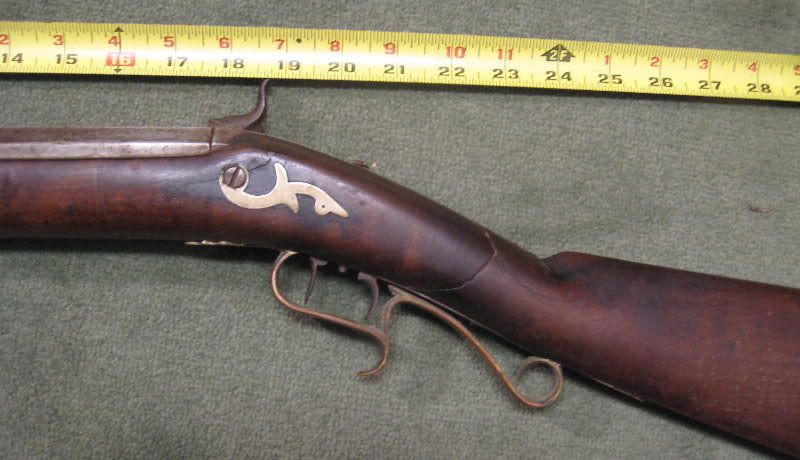
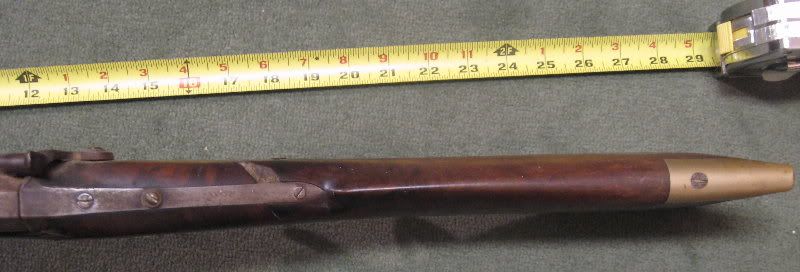

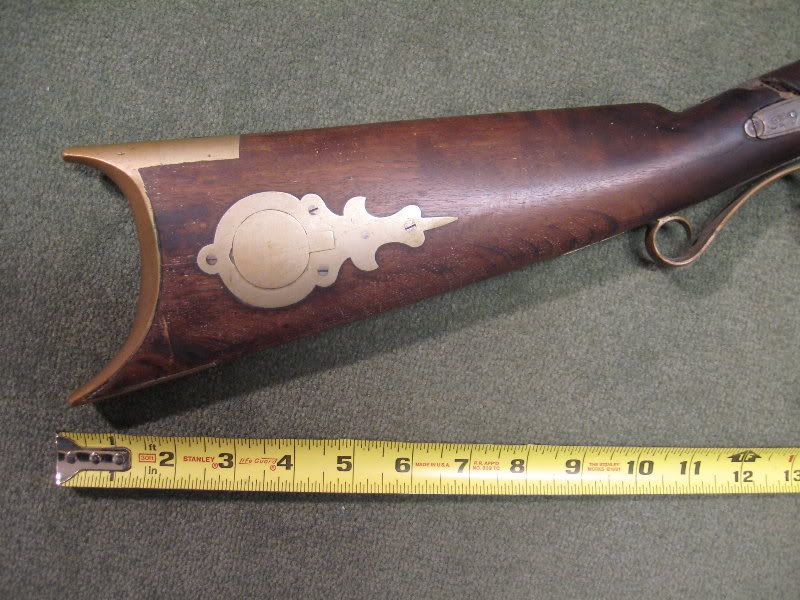
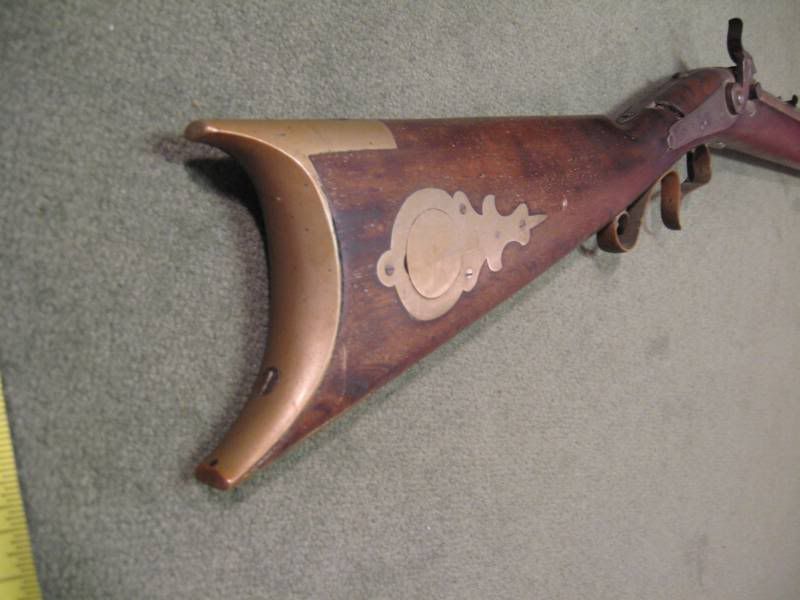

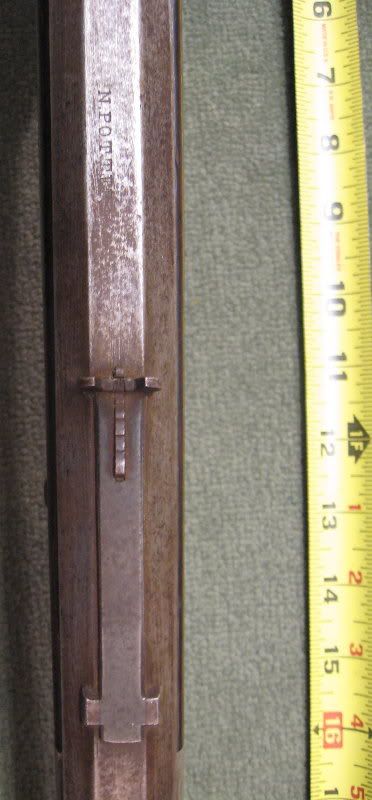
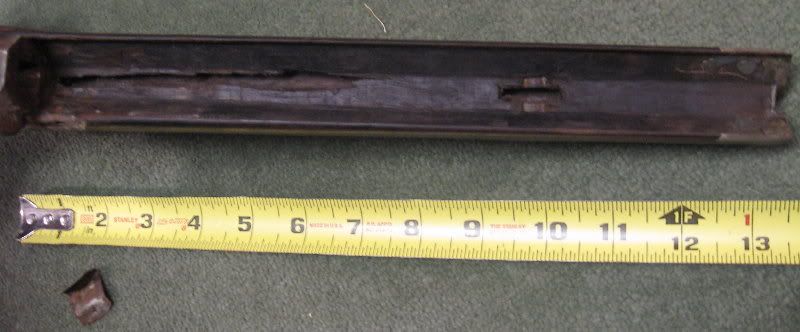
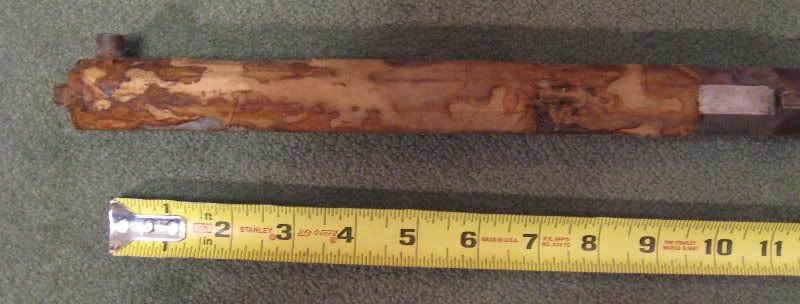
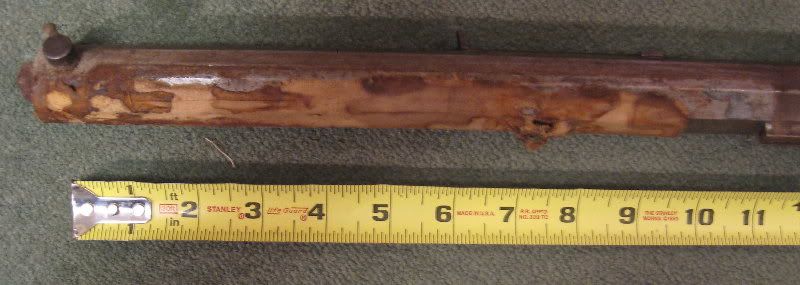
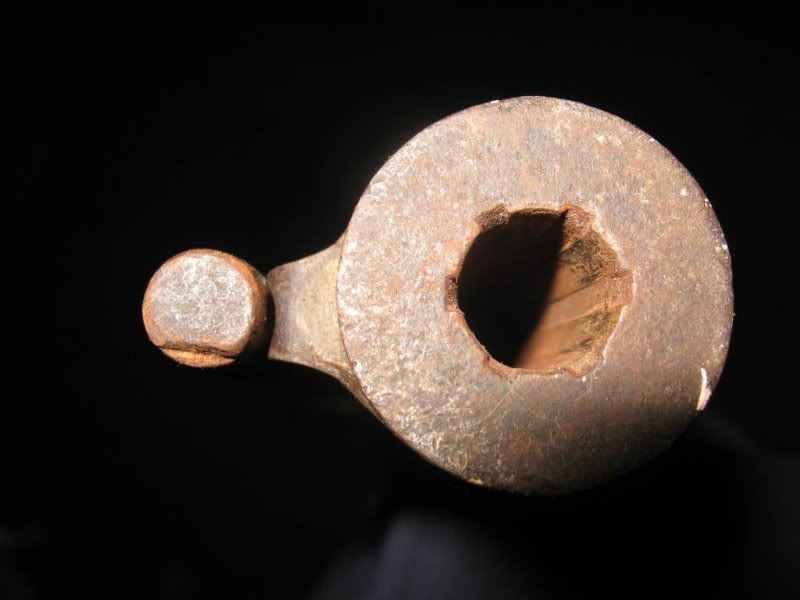
Comments:
This is a great NY ( Michigan ) rifle with a super story! And, it is still in 'as found' condition. Hope that the owner retains it just the way it is. Potter is an unknown maker to me so it is nice to see one of his rifles. He was an accomplished builder and there should be others somewhere. If you found this gun in a gunshop in Laramie, Wyoming you wouldn't think twice about branding it as a Plains Rifle; and it has that appearance.
=====================================================
This is a pretty rough rifle, and I presume the New York attribution is based on where the trash can was located when the gun was found, rather than details on the gun. If there are/were other New York characteristics used in attributing this rifle, it would be nice to list them so we can all learn more about guns from that state. Hopefully, Curt Johnson, who invested in the set of "New York Gunmakers" books, will check the "N. Potter" name for us, to see if Potter is listed in that comprehensive reference.
=====================================================
I do not think this gun offers much educationally, a rather plain and typical 1850s half-stocked "squirrel" rifle with turned muzzle. If we can identify Potter and where he worked, then it would be beneficial for the museum as an example of a little know gunmaker's work. If we cannot identify the gunmaker, I do not believe there is enough evidence in the rifle itself at this time, to attribute it to New York, as opposed to Ohio or another state.
Additional pictures of the back side of the gun are needed, to see the style of cheekpiece and lock bolt washer or side plate, and possibly a cheekpiece inlay, since they might shed additional light on where this rifle was most likely made. It would also be nice to get a comment from the owner on what the orange-brown "gunk" is on the under side of the barrel in the forestock area. It almost looks like a fine weave cloth stock liner of some sort. Since it is an anomaly, it should be described.
As the gun currently sits, I do not think it should be attributed to any state, since the attribution is so weak, based on a trash can location rather than detals from the gun itself. I suggest it be put in the "unknown" classification. Otherwise if it turns out to be from another state, it will be overlooked by most users if "hidden" in the NY classification, rather than being available to potentially knowledgeable users who would view the "unknown" category.
=====================================================
Owner:
Attached are the additional pictures requested. I absolutely agree this
is a pretty plain rifle, and should only go into the museum if it is
useful for education. In any event, I certainly appreciate any
information, and I'm sure my step-father will.
The stock does have a perch-belly shape to it, which doesn't seem to be
very obvious in the photos. #404 is the sideplate, 405 tang and comb,
401 under the forearm, 402 trigger guard, 403 toeplate. There is no
cheekpiece or inlay on the cheekside. I tried to determine the rate of
twist. I got a different answer each time. I suspect because the
barrel is so rusty inside.
The fabric appears to be plain white cotton sheet (bedded the barrel
with real bedding? No, I didn't say that.). None of it was visible when
the barrel was in the stock. The wrist is basically held on with the last barrel tang screw and the TG screw.
=====================================================
I find this rifle rather interesting, especially since it is by a known MICHIGAN maker, rather than New York. I left some information and comments on this in the visible to all "collecting" forum. I would consider it a "hunting & target rifle", especially since the muzzle is turned for a guide bullet starter, for use with a picket bullet. Is it cut with gain-twist? I'd be surprised if it's not. The odd screw in the middle of the tang looks like it was used to plug the hole where a "lollipop" tang sight once belonged.

